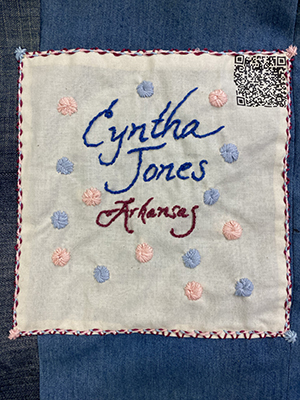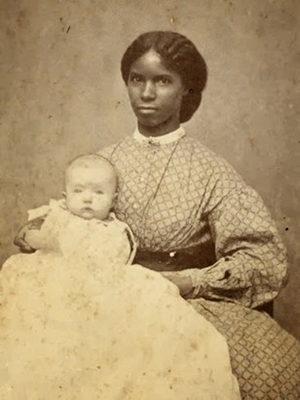Cyntha Jones
“Dr. Dabney and his sister raised my mother. And when he married, my mother suckled every one of his children. I just worked in the house and nursed. Never worked in the field till I was grown and married. I was nineteen when I married the first time. I stayed right there in that settlement till the second year of surrender. When I was twenty-one they had me fixed up for a midwife. Old Dr. Clark was the one started me. I never went to school a minute in my life but the doctors would read to me out of their doctor books till I could get a license. I got so I could read print till my eyes got so bad. Old Dr. Clark was the one learned me most and since he died I ain't never had a doctor mess with me. In fifteen years I had 299 babies on record right there in Rison. That's where I was fixed up at under five doctors. And anybody don't believe it, they can go down there and look up the record.” – Cyntha Jones
 Lev Sewald ’26 and Mary Benyamin ’25
Lev Sewald ’26 and Mary Benyamin ’25
Selected enslaved women were frequently trained as midwives to deliver their fellow workers’ babies, who were recorded as business gains on plantations. Male slave owners often raped their female workers to increase their labor force. Thomas Jefferson himself fathered six children with his wife’s teenage half sister, Sally Hemings, whom he owned. He wrote: “I consider the labor of a breeding woman as no object, and that a child raised every two years is of more profit than the crop of the best laboring man.” Jefferson was not unique in his statement. In 1662, the Virginia House of Burgesses passed a law which, contrary to centuries of patriarchal lineage legal standards, ruled “that which is brought forth follows the womb”. The law Partus Sequitur Ventrem stated that any child born to an enslaved person follows the mother’s bloodline, rather than the father’s. It made raping enslaved women by their owners legal while eliminating their paternity obligations.
Sources
- Federal Writers' Project: Slave Narrative Project, Vol. 2, Arkansas, Part 4, Jackson-Lynch. 1936. Manuscript/Mixed Material. Federal Writers' Project: Slave Narrative Project, Vol. 2, Arkansas, Part 4, Jackson-Lynch | Library of Congress
- Extract from Thomas Jefferson to Joel Yancey, 17 Jan. 1819 [Quote]
- The Forced Breeding and Rape of Enslaved People for Profit | by William Spivey | Cultured
